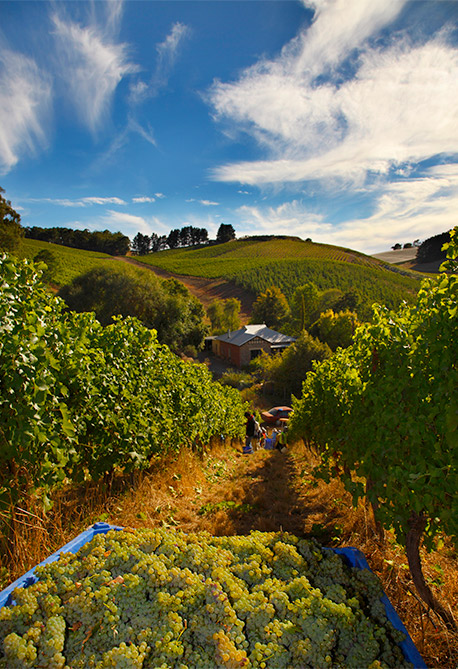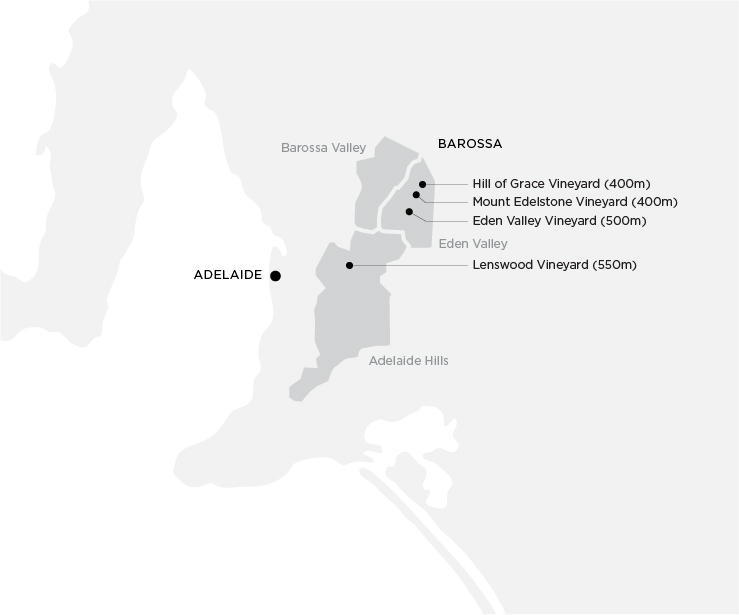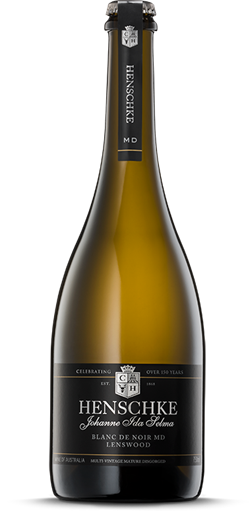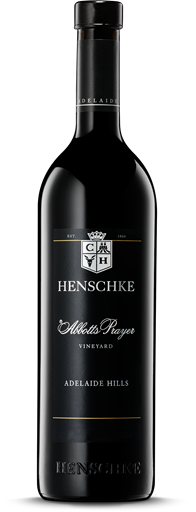Lenswood Vineyard
Cool climate innovation

The history of Lenswood vineyard
Stephen and Prue Henschke – pioneers and innovators
In 1981 Prue and Stephen purchased an apple orchard in Lenswood, in the Adelaide Hills, with the intention of eventually redeveloping it as a vineyard.

The Lenswood vineyard was originally established for research and development purposes, to positively influence the quality of the fruit from the older Henschke vineyards in the Barossa Valley and Eden Valley.
A region with exciting potential
In 1981 Stephen and Prue purchased a property in the Adelaide Hills region, selecting a site in Lenswood covered in apple, cherry and pear trees, with beautiful steep slopes and stunning views toward the older vine country. The future vineyard, 15km north-east of Mount Lofty (700m), was positioned right at the top end of a long, picturesque valley of apple orchards and natural forests at an altitude of 550m, with an annual rainfall of 1134mm.
Stephen and Prue moved into this peaceful apple kingdom with the intention of converting the land to vineyard, until nature took over, and after two years of operating it as an orchard, they could only stand by in 1983 as the Ash Wednesday bushfires engulfed the property in flames. A D9 Caterpillar removed the blackened tree stumps in preparation for the vineyard in which pinot noir, chardonnay, riesling, merlot and cabernet sauvignon were planted over the 13ha property.
Each of these varieties, apart from the cabernet sauvignon that struggles to get to 22°Bé every year, has achieved excellence because of the flavours and build-up of extract on the palate. Even though the pinot noir vines were still young the wild berry fruit characters were evident on the voluptuous mouthfeel, and now have become more intense and complex with mature, more settled vines. The chardonnay goes against the tide with its fine citrus, honeysuckle to gooseberry characters and great palate structure and length without the dominance of oak. The riesling is the biggest surprise as its fruit character has moved from the citrus/lime spectrum of Eden Valley into the more fragrant citrus blossom/passionfruit flavours. Riesling has always been a beautiful food wine, but the Lenswood riesling has an added fragrance, minerality and racy acidity that makes it a very pleasant wine to drink by itself. The merlot has a rich, fleshy structure with spicy violet and blue fruit characters and fine-grained tannins, and is a variety proving to be one of the flagship wine styles for Adelaide Hills vineyards.
Lenswood vineyard today
Stephen and Prue have initiated several trials looking at different clones of pinot noir (there are nine: MV6, D5V12, G8V3, G8V7, Pommard and the famous Bernard clones of 114, 115, 777 and 667, recently imported from the Burgundy area); chardonnay (seven clones: I10V1, I10V5, Antav 84, 277 and the Burgundian Bernard clones, B95, B96, B76); and merlot (six: D3V14, D3V5, D3V7, 6R, 8R, Q45-14). They have also adopted VSP (Vertical Shoot Positioned) trellising throughout the vineyard.
With high rainfall, steep slopes (30-40%) and upright curtain-foliage training used to manage the Lenswood vineyard, Prue has had to pioneer new techniques and investigate the use of different machinery.
She has adopted the ‘minimum soil disturbance’ attitude and uses pasture grasses as a green sward between the rows. The Lenswood vineyard is on a range of well drained soils consisting of sandy loam over medium clay interspersed with shale fragments overlying a shale bedrock.
Running this vineyard cannot be done from a textbook and it takes a lot of clever thinking and fine adjustment to make it work. It will always cost more to produce grapes from steeper vineyards in wetter regions but the benefit of producing some of the best quality pinot noir, chardonnay, riesling and merlot in the country is well worth the investment.









